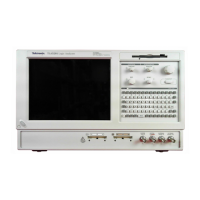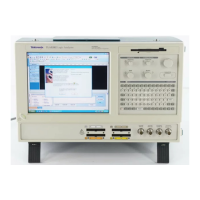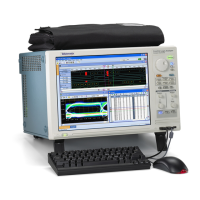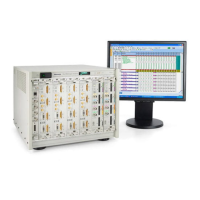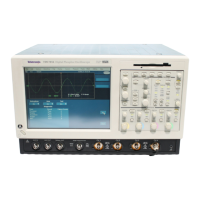Theory of operation
TriMode operation
The TriMode feature of the P7700 Series probes is designed for improved
convenience and enhanced capability in measuring differential signal quality.
Because a differential signal is composed of two complementary single-ended
signals, full characterization of a differential signal requires more than a simple
differenti
al measurement.
A TriMode probe features four input modes that allow a differential signal to be
fully char
acterized with four measurements:
Differential
Positive polarity, single-ended
Negative polarity, single-ended
Common mode
A TriMode probe provides improved efficiency and convenience by enabling full
differential signal characterization from a single soldered connection.
P7700 Series active probe solder tips support the TriMode functionality of a
P7700 Series probe by buffering a matched pair of input signals from a DUT
differential signal connection. These active solder tips support the transmission
of high-frequency return currents through a probe tip ground path referenced to
the DUT ground connection.
Using any of the P7700 solder-in tips, probe connections are made to the two
complementary signals (the A signal and the B signal) and a ground reference.
Fro
m this single DUT connection, the internal electronic switching control of
the TriMode probe allows any one of the four probe input modes to be selected
at a time. The TriMode probe inputs are routed to an ASIC (application-specific
integrated circuit) inside the probe to a set of four independent input amplifiers
that perform the following signal calculations:
A – B (for differential signal measurement)
A – GND (for A input single-ended measurement)
B – GND (for B input single-ended measurement)
[A+B]/2 - GND (for common mode measurement)
NOTE. In the B – GND Mode, the negative polarity B input is not inverted.
10 P7700 Series TriMode Probes Technical Reference

